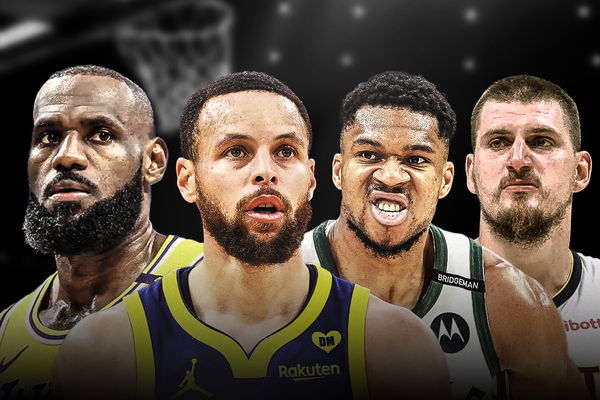

The 2024-25 NBA Business Report is telling. The overall growth continues to be robust, with the NBA generating $893.8 M in sponsorship revenue. Yet there is a larger disparity between the big-market and small-market teams. The giants like the Lakers, Knicks, and Celtics dominate the sponsorship revenue as well as merchandise sales. The Collective Bargaining Agreement has tried to offer a balance. But the current scenario reveals it’s still a far cry.
Market Size: Why It Is Important
We judge small and big markets according to Nielsen Designated Market Area (DMA) rankings. DMA is defined as ‘non-overlapping geographic regions that group counties based on television viewing areas’. It helps understand the consumer pattern, TV viewership, and regional TV networks’ coverage in a particular area. As of March 2025, there are 210 DMAs in the United States.
ADVERTISEMENT
Article continues below this ad
New York, Los Angeles, Chicago, Dallas-Fort Worth, and Philadelphia account for the top five areas. So, the Knicks, Clippers, Lakers, Bulls, Mavericks, and 76ers have a bigger operating ground compared to the Bucks, Spurs, or Nuggets, and the Pistons. Even our own data shows the larger fan base that big market teams enjoy.

Bigger market size, or larger fan base, however you want to put it, translates into more revenue. As per Forbes’s 2024 NBA Team valuation, each of the ten most valuable franchises belongs to a large market. Whereas, three of five teams at the bottom of the list belonged to small markets. Indeed, the 2024-25 NBA Business Report shows that two of the three teams (Hornets and Spurs) without a jersey patch deal last year were from the small-market teams. The disparity is more acutely visible in the sponsorship agreements these franchises sign.
What’s your perspective on:
Can small-market teams ever truly compete with the financial giants like the Lakers and Knicks?
Have an interesting take?
Revenue Disparities among Big and Small Market Teams
The market size in which a team operates leaves a significant impact on its revenue. For example, the average ticket price at Target Center, the arena of the Minnesota Timberwolves, is $42. They earn $30 in revenue per fan. Whereas, the New York Knicks draw $42 per fan. What is the average ticket price at Madison Square Garden? $195.
The Timberwolves are valued at $247M—just one-fifth of the Knicks’ $ 1.08 B. The Timberwolves earn barely $57M from gate receipts compared to the New York Knicks’ $ 175 M. Similarly, the Timberwolves rake in $318M from Target Center, compared to $1.3B that the Knicks earn from Madison Square.
The gap in sponsorship revenue is also huge between big-market and small-market teams. For example, back in 2021, the Lakers inked a deal with Bibigo, a South Korean Food brand, for a jersey patch deal worth $100M for five years. Whereas, the Oklahoma City Thunder’s jersey patch deal with Love’s Travel Stops & Country Stores, a regional retail chain, was pegged at $10M/annum.
The impact of market size is also felt in merchandise sales.
New York Knicks, despite their long-running struggle to deliver something for fans, still generate a sizable revenue from jersey sales. Lakers, Celtics, and Warriors dominate the merchandise market as well. Smaller-market teams like the Bucks, Mavericks, and Spurs have to rely solely on star power to drive merch sales.
For the last decade, Steph Curry and LeBron James have dominated jersey sales. Now, Luka Doncic (again of the Lakers) has taken up the mantle. In fact, Athlon Sports reported that Bronny James’ jersey alone has brought in over $50M—more than LeBron’s current salary. Moreover, in the recently released report of top-selling jerseys by team, six of the top ten are from big-market teams.

via Imago
Mar 19, 2025; Los Angeles, California, USA; Los Angeles Lakers guard Bronny James (9) inbound the ball in the second half against the Denver Nuggets at Crypto.com Arena. Mandatory Credit: Jayne Kamin-Oncea-Imagn Images
The bigwigs dominate the sponsorships and merch sales thanks to a larger fan base and popularity. On the other hand, small market teams are more dependent on a few star players to drive merch sales and subsequently generate more revenue. In light of this, the Collective Bargaining Agreement (CBA) becomes significant for small-market teams.
ADVERTISEMENT
Article continues below this ad
Competitive Balancing Tools to Address Financial Disparity
The latest modification in the CBA was made to address the financial imbalances among small and big-market teams. The 2024 CBA raised the salary cap to $156M, and revenue sharing was expanded by 12%.
Moreover, thanks to the ‘first apron’ and ‘second apron’, powerhouses like the Lakers, Knicks, and Celtics face some restrictions in stockpiling talent in their roster, giving a chance of fair play to smaller teams. Similarly, the expansion of salary increases to 140% during contract extensions incentivizes players to stay with the smaller-market teams instead of jumping ship.
Interestingly, despite a smaller market size compared to the bigwigs, franchises like the Bucks and the Spurs enjoy a loyal fan base. A study by Captiv8 shows that the Spurs and Bucks have the 3rd and 4th most engaging fan bases in the NBA.
ADVERTISEMENT
Article continues below this ad
Last year, the Cleveland Cavaliers were the fourth most-followed NBA team on Instagram. Whereas, the Bucks, Magic, Pistons, Grizzlies, and Kings ranked in the top ten franchises with the most engaging fan bases.
The NBA’s financial divide between large and small markets is real. But with CBA in place, global expansion, and engaged fan bases, small-market teams still have room to compete—and grow.
ADVERTISEMENT
ADVERTISEMENT
ADVERTISEMENT
ADVERTISEMENT


Can small-market teams ever truly compete with the financial giants like the Lakers and Knicks?